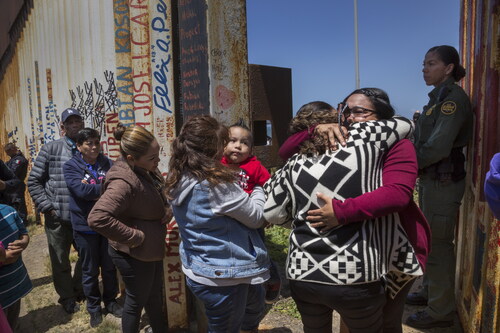Figures & data
Figure 1. Griselda San Martin, The Wall, 2015–16. José Marquez poses for a photograph that a visitor is taking of his family on the other side of the border wall. Marquez has not been able to hug his daughter Susana in 14 years, since he was deported from the United States after living and working in San Diego for 18 years. Photograph © Griselda San Martin.
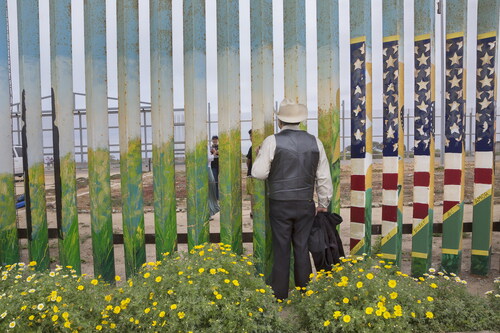
Figure 2. The Wall by Griselda San Martin, shown in the group exhibition When does a place become home? at St. Ann’s Warehouse, Brooklyn, New York, 2018. Photograph courtesy of Griselda San Martin.
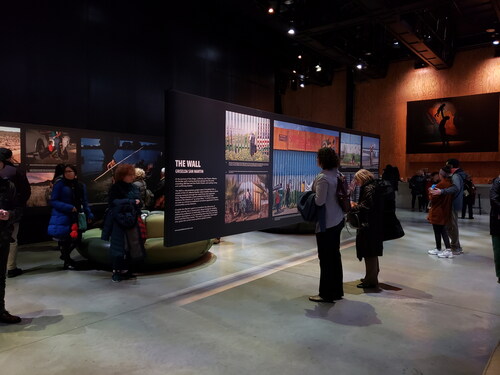
Figure 3. Griselda San Martin, The Wall, 2015–16. The Salgado family poses for a portrait. Cesar Salgado and his niece Giselle visit with several family members in Tijuana, and Cesar saw his daughter for the first time in 14 years, only it was through the beams of the border wall. Photograph © Griselda San Martin.

Figure 4. Griselda San Martin, The Wall, 2015–16. Family portrait. Rosario Vargas (in the foreground) with her daughter Jannet Castañon and grandson Hector, 15, (behind the border wall, on the U.S. side.) Rosario and her daughter live just a few miles apart but have been separated by the U.S-Mexico border wall for almost 10 years. On April 30, 2016, they were one of the few families who were allowed to briefly reunite for 3 min when a small door in the fence was opened. But once the door of hope was closed, the reality of the border hit them again. They see each other every weekend through the metallic fence. Photograph © Griselda San Martin.
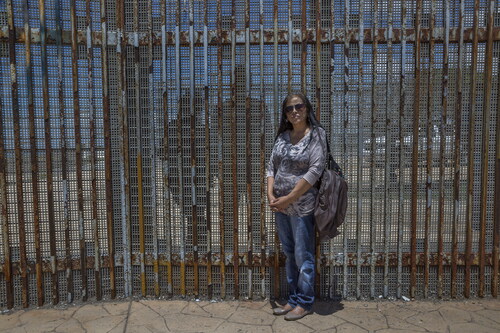
Figure 5. Griselda San Martin, Olga Camacho and her granddaughter Yara, who is 2 years old, visit Olga’s son Jonathan, who she hasn’t been able to hug in 13 years. Jonathan benefited from DACA (Deferred Action for Childhood Arrivals) and has been able to stay and work in the United States legally. However, the Deferred Action benefit does not allow individuals to leave the country and return freely. Photograph © Griselda San Martin.
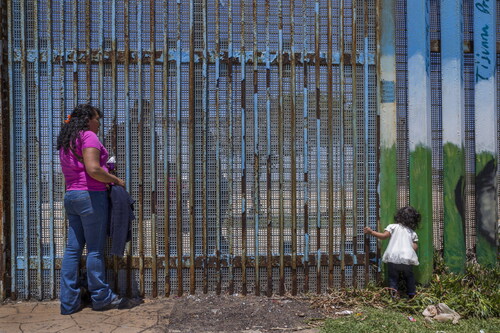
Figure 6. Griselda San Martin, The Wall, 2015–16. José Marquez hires Mexican norteño musicians to sing a song to his daughter Susana, 33, and grandson Johnny, 14, who live in California and meet with him every month at the border wall. They have not been together in 14 years since Marquez was deported. Photograph © Griselda San Martin.
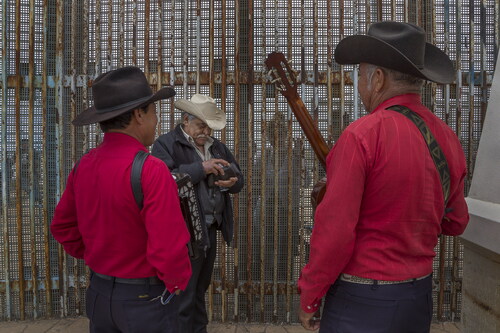
Figure 7. Griselda San Martin, The Wall, 2015–16. Gabriela Esparza (in red) reunites briefly (3 min) with her sister Susana and her mother María del Carmen Flores during the “Opening the Door of Hope” event at the border wall in Playas de Tijuana, Mexico, on April 30, 2016. On January 2018, Border Patrol announced the door will not re-open. Photograph © Griselda San Martin.
